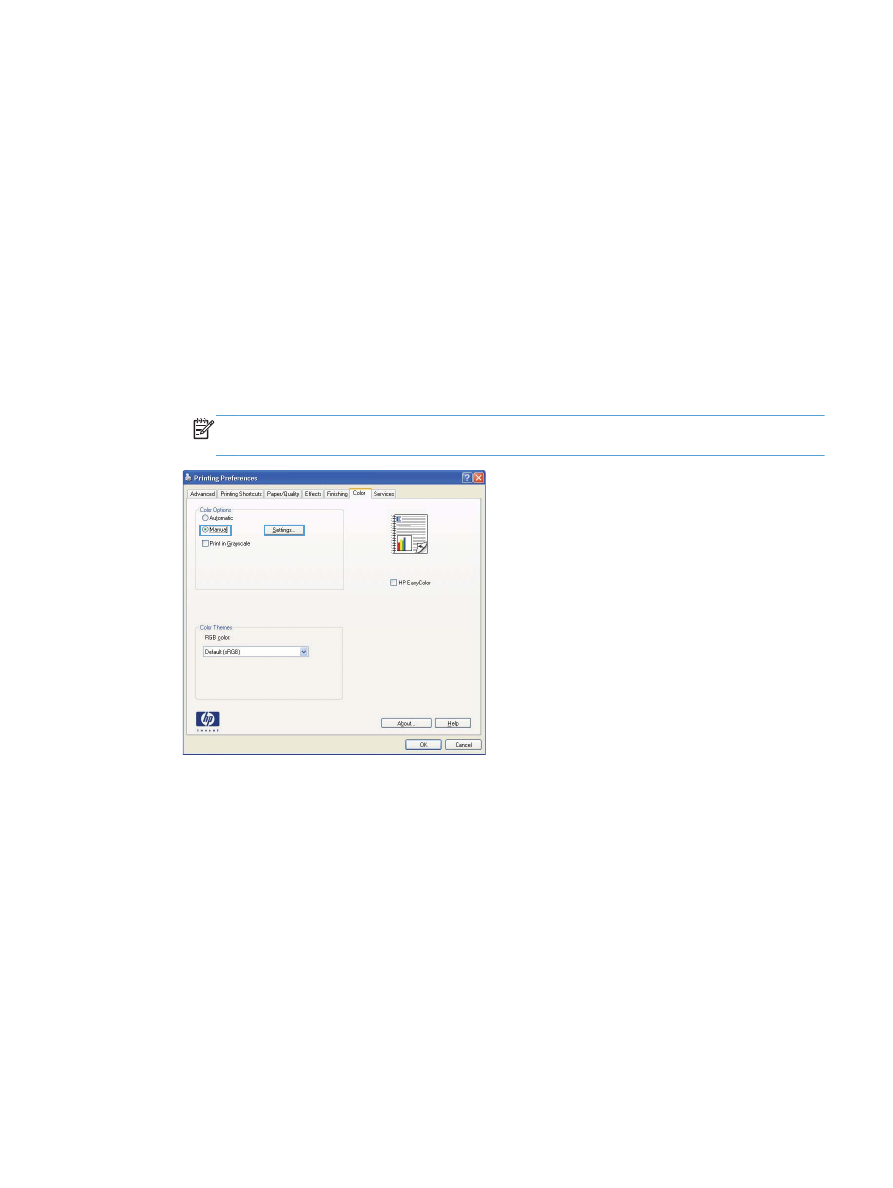
Manual color options
Use manual color options to adjust the Neutral Grays, Halftone, and Edge Control options for
text, graphics, and photographs.
ENWW
Adjust color
115

Table 9-1
Manual color options
Setting description
Setting options
Edge Control
The Edge Control setting determines the rendering
of edges. Edge control has two components:
adaptive halftoning and trapping. Adaptive
halftoning increases edge sharpness. Trapping
reduces the effect of color-plane misregistration by
overlapping the edges of adjacent objects slightly.
●
Off turns off both trapping and adaptive halftoning.
●
Light sets trapping at a minimal level. Adaptive halftoning is on.
●
Normal sets trapping at a medium level. Adaptive halftoning is
on.
●
Maximum is the most aggressive trapping setting. Adaptive
halftoning is on.
Halftone
Halftone options affect color output clarity and
resolution.
●
Smooth provides better results for large, solid-filled print areas
and enhances photographs by smoothing color gradations. Select
this option when uniform and smooth area fills are important.
●
Detail is useful for text and graphics that require sharp
distinctions among lines or colors, or images that contain a
pattern or a high level of detail. Select this option when sharp
edges and small details are important.
Neutral Grays
The Neutral Grays setting determines the method
for creating gray colors used in text, graphics, and
photographs.
●
Black Only generates neutral colors (grays and black) by using
only black toner. This guarantees neutral colors without a color
cast. This setting is best for documents and grayscale viewgraphs.
●
4-Color generates neutral colors (grays and black) by combining
all four toner colors. This method produces smoother gradients
and transitions to other colors, and it produces the darkest black.
116
Chapter 9 Color
ENWW